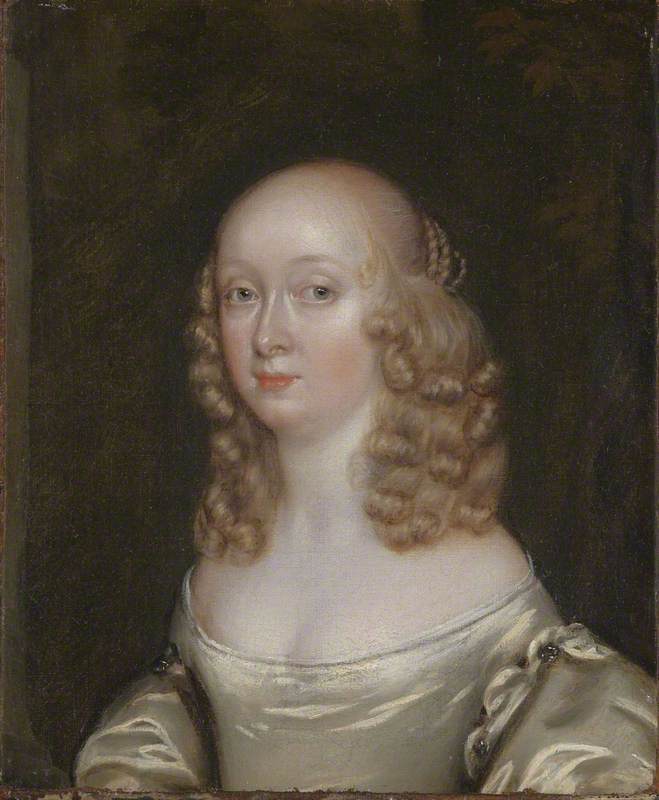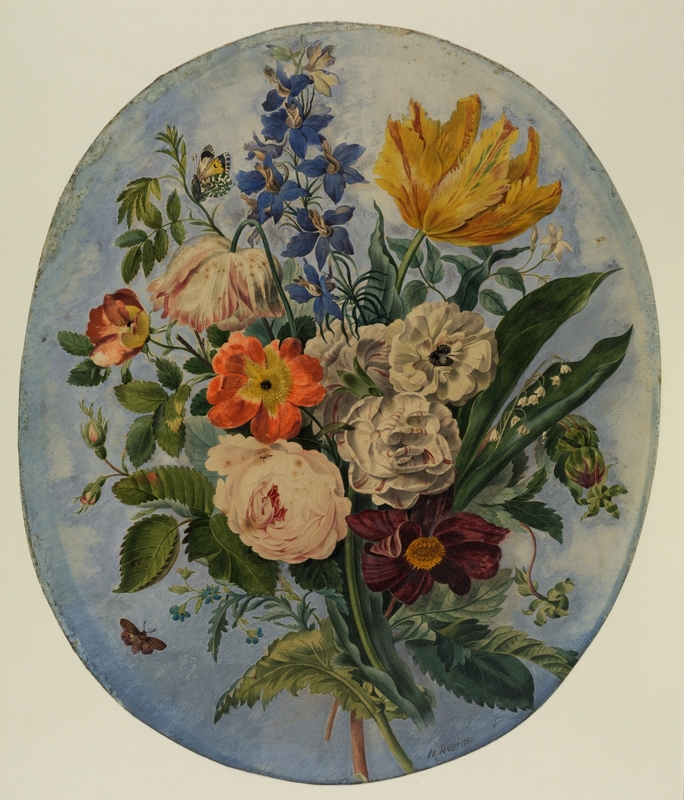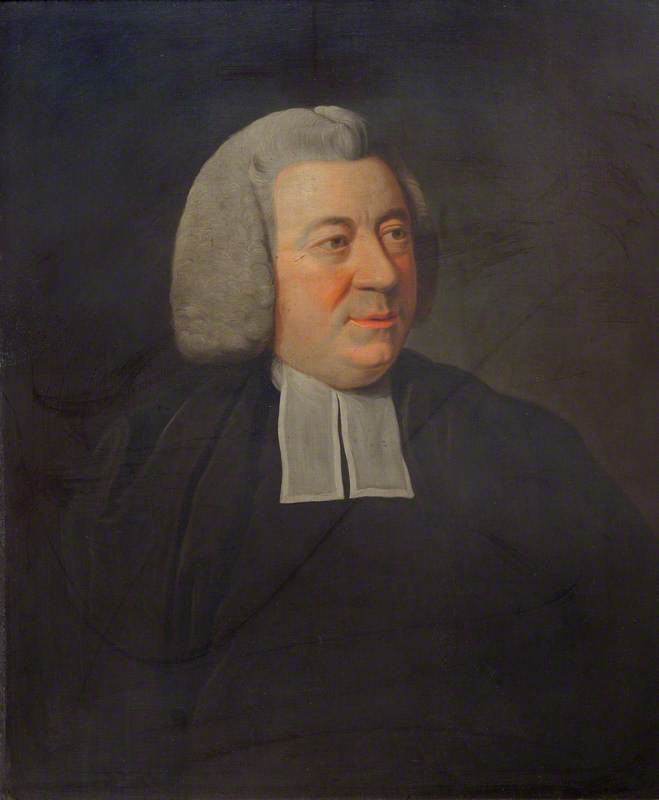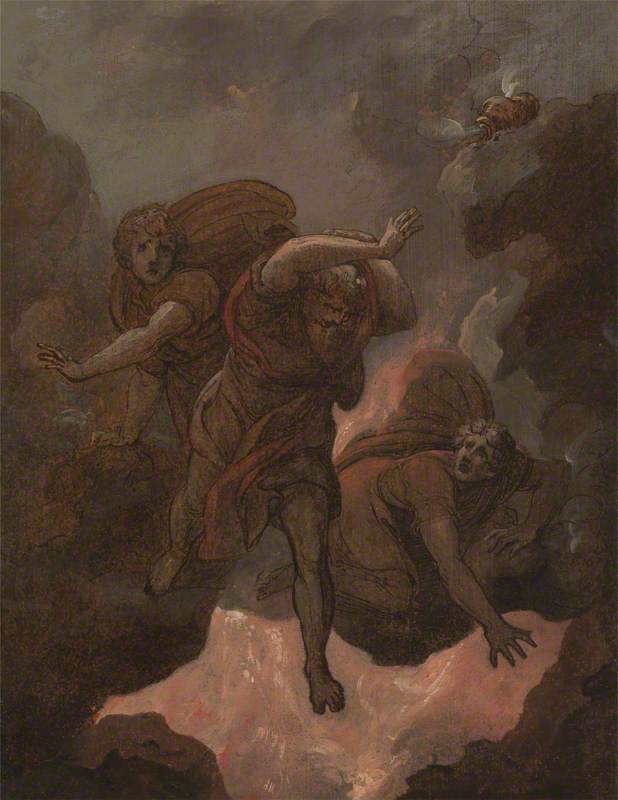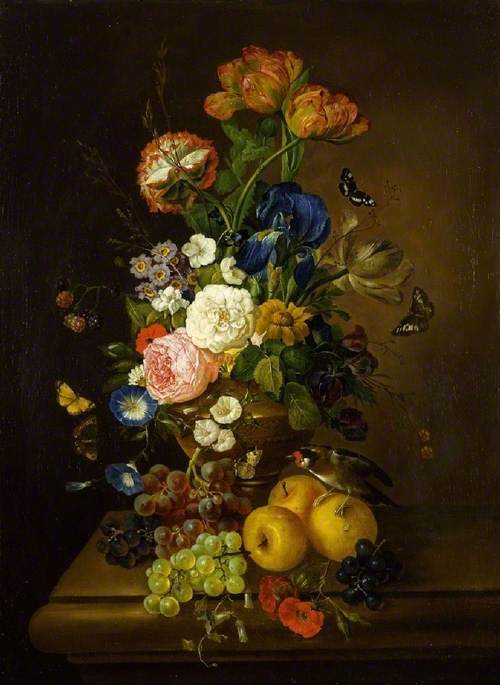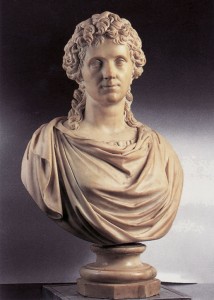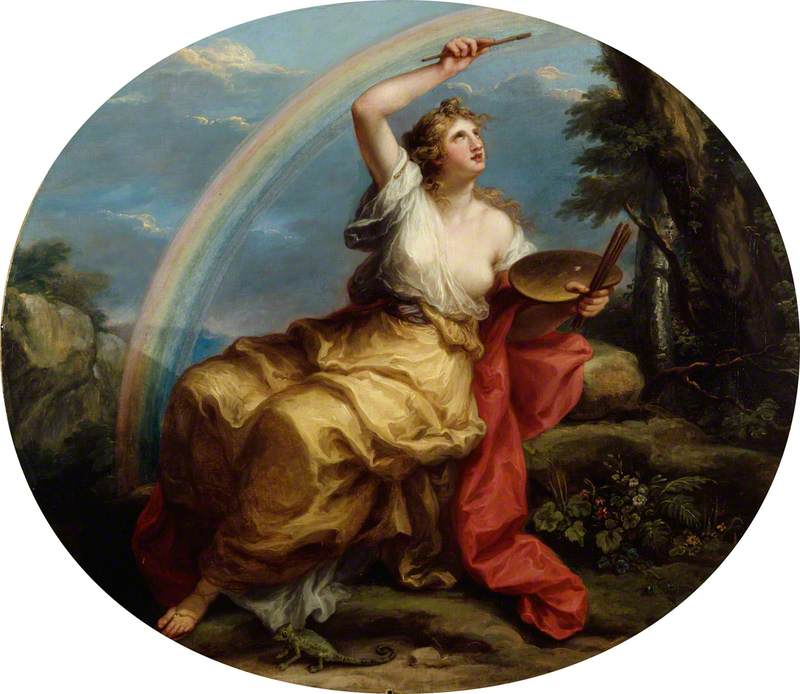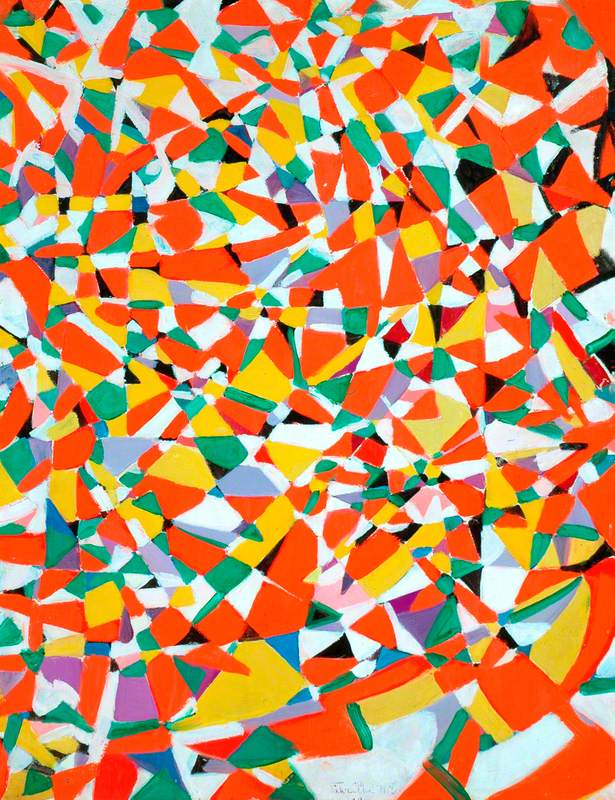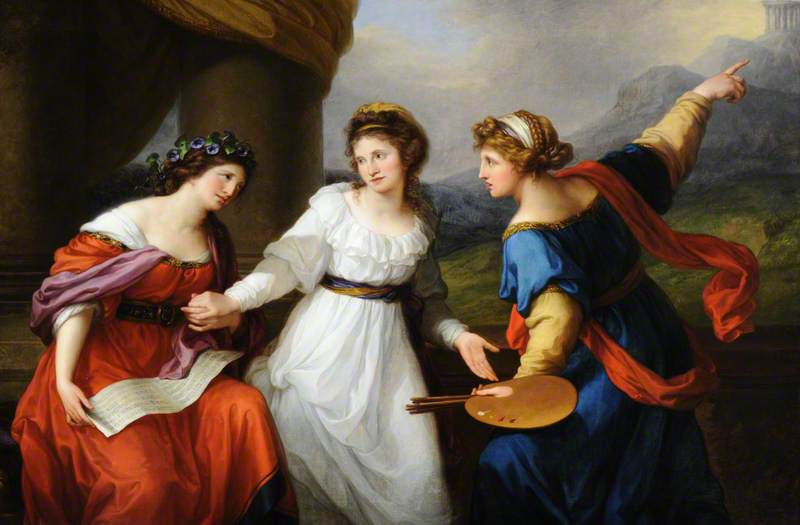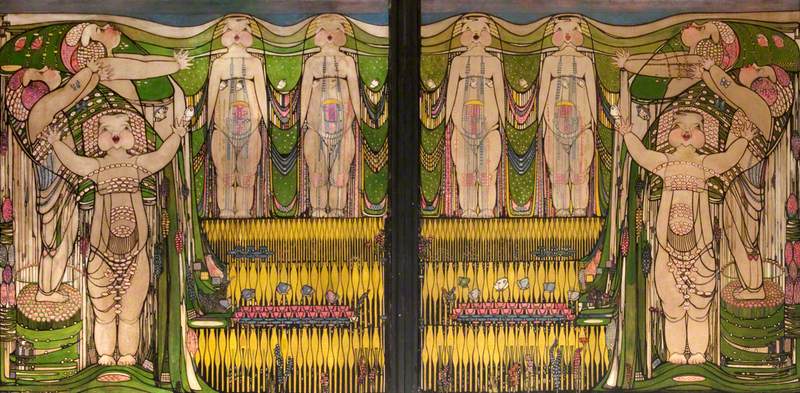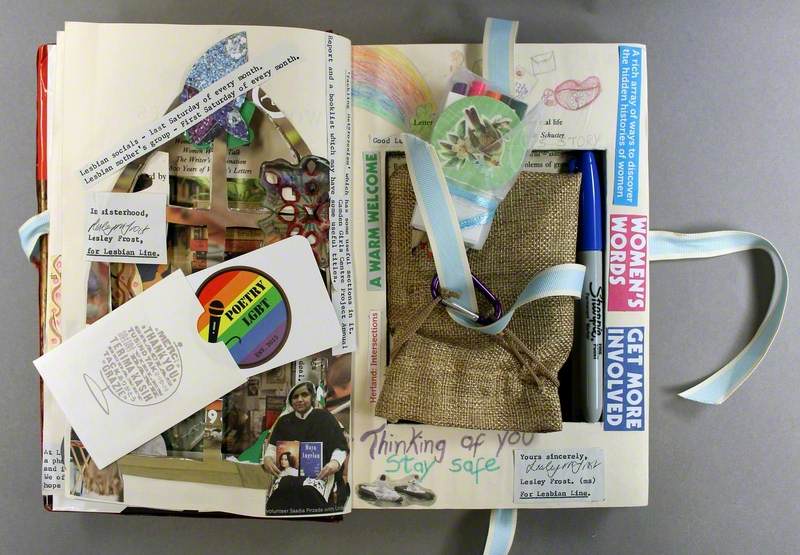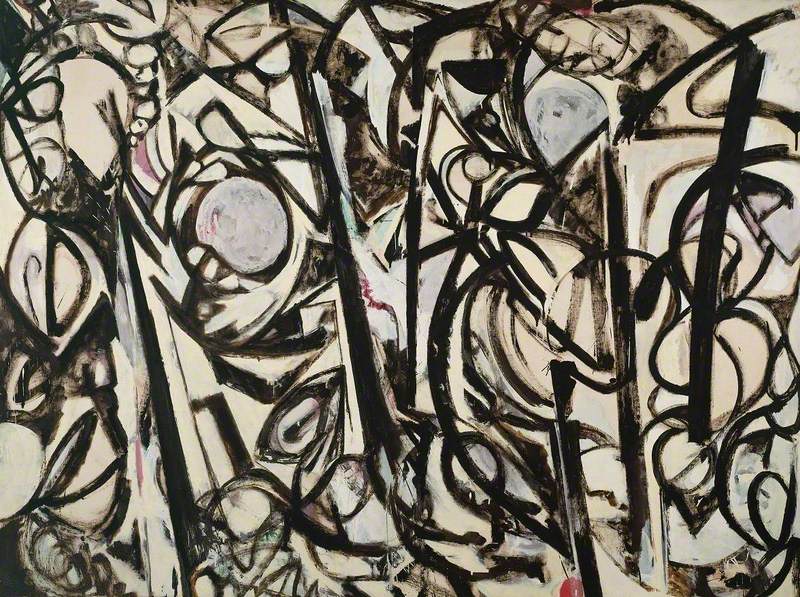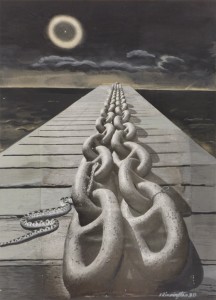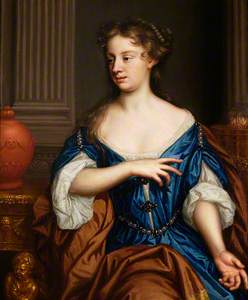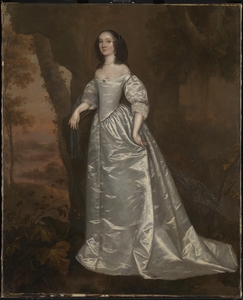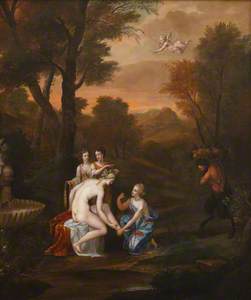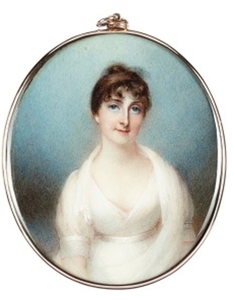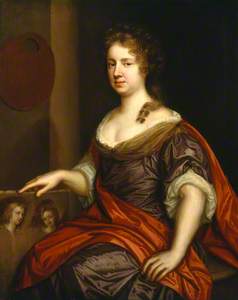A new exhibition at Tate Britain, 'Now you see us: women artists in Britain 1520–1920', traces the ways in which women were able to become professional artists, breaking taboos and often going against society's expectations. It follows a rise of interest in recent years in the contribution of women artists, and the drive to recover earlier 'lost' figures.
Women working as artists in Britain and Europe in the seventeenth and eighteenth centuries were not such a rarity as art history often suggests. Though wider opportunities for them to work with equal status and opportunity as men did not exist, the arts were seen as more suitable for women than other fields.
As early as the mid-sixteenth century, some worked as court painters, in artists' guilds and in crafts. The Flemish miniaturist Levina Teerlinc (who begins the Tate show), for example, served as court artist to four Tudor monarchs, including Henry VIII and Elizabeth I.
Portrait of a Lady holding a Monkey
1560s, portrait miniature by Levina Teerlinc (1510–1576) 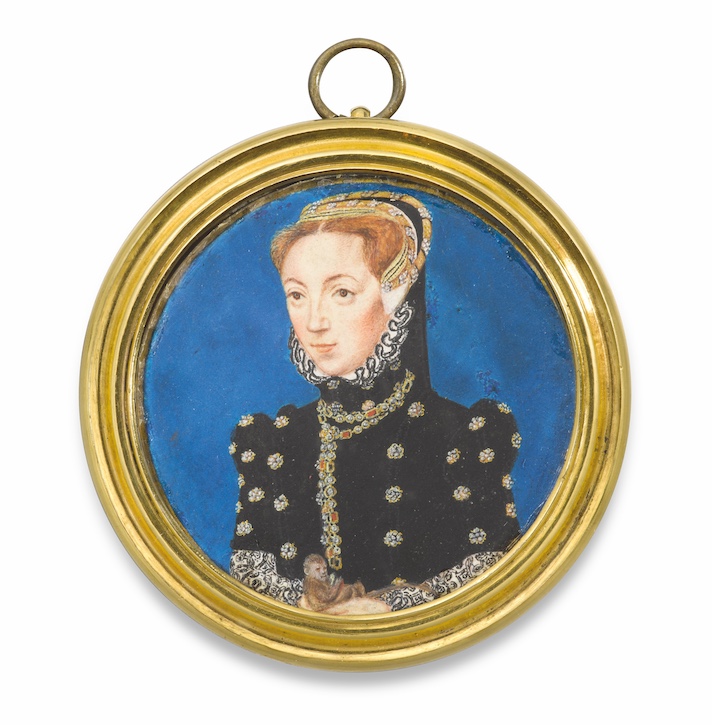
The difficulty in accessing training, however, did restrict the number of women who could make art a career. If you had a family member who was an artist (a father, a brother) you might learn in his studio, or, if you were sufficiently wealthy, you might learn to draw or paint as an accomplishment, buying in the expertise of a professional artist for private tuition.
Below are seven British artists – most of whom feature in the Tate exhibition – who deserve to be better known.
The early English portrait painter Mary Beale (1622/1623–1699) had a father who was an amateur artist, miniature painter and a collector of paintings (her family owned work by Peter Paul Rubens and Anthony van Dyck) and her husband, Charles, was also an amateur painter and ran her studio in London's fashionable Pall Mall.
Unusually, in her case, her talent was matched by her spouse's high regard of it, and she was allowed to supersede him and establish a professional career. She took on female apprentices, though no records of their subsequent careers survive.
The Carlile Family with Sir Justinian Isham in Richmond Park
Joan Carlile (c.1606–1679) 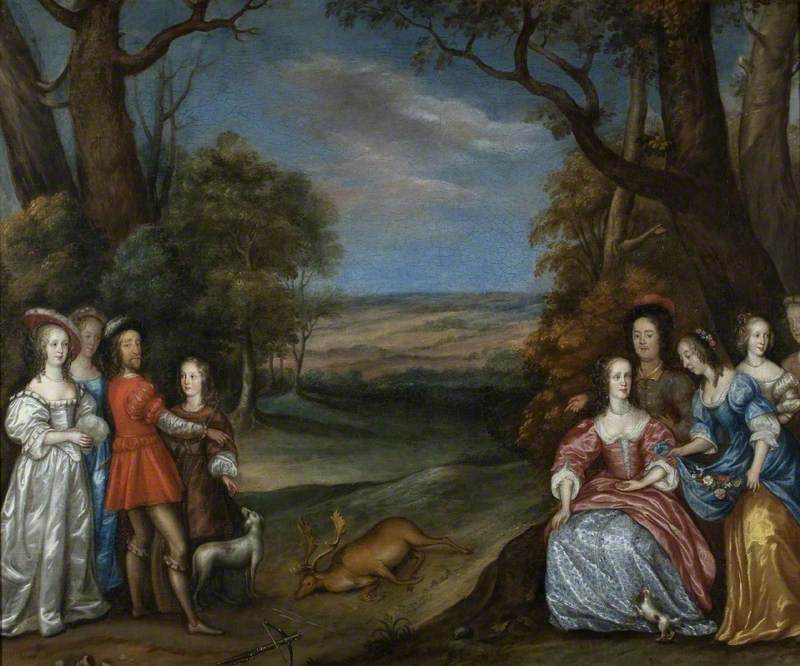
The path had been slightly cleared for Beale by the earlier example of Joan Carlile (1600–1679), who may be seen as the first professional female British artist. Carlile moved on the fringes of aristocratic circles, her husband was a keeper of the Royal Parks, and she made her subject matter group paintings and smaller-scale portraits of lords and ladies expensively dressed in silk and lace, sometimes in bucolic settings.
In her Portrait of an Unknown Lady (1650–1655) the astonishing nacreous lustre of the sitter's white silk gown, shown full length, shines against the foil of the dull brown foliage behind her. At this point, the Civil War had ended but the restoration of the monarchy was still in the future, and Carlile's painting, with its overt celebration of luxury and leisure (the spotless pale fabric speaks of both) seems provocative.
It is possible that Carlile taught Anne Killigrew (1660–1685), an accomplished painter and poet whose family encouraged her creative pursuits, although it's not clear if she ever painted professionally. Only a handful of Killigrew's works survive today, including Venus Attired by the Three Graces, which reveals her interest in mythological scenes.
Although she died of smallpox aged just 25, Killigrew stands alongside Beale and Carlile as one of Britain's first female artists.
By the eighteenth century, the growth of the economy and Britain's position as a world power meant that culture became a much more commercial venture and organisations, clubs and societies were formed for its promotion and enjoyment, which women artists had to negotiate.
The best known of these, the Royal Academy of Arts, founded in 1768, did include two women among its founder members: Angelica Kauffmann (1741–1807), a Swiss artist who worked in London, and Mary Moser (1744–1819).
Moser was only 24 at the time and remains the youngest-ever member. A painter of virtuosic still life, fruits and flowers, she found her work feted as this subject matter, developed first by the Dutch masters of the genre, became highly sought after.
The exquisite attention to detail in her painting, with its beads of dew and butterflies on the wing, was perhaps nurtured by seeing her father's work; as a goldsmith and medallion maker, this was also his talent. But the gorgeous sensuality – seen also in her approach to the nude figure – was entirely her own. She married, aged 53, but also had an affair with the estranged husband of another artist: Maria Hadfield Cosway (1759–1839).
Cosway was born in Florence to English parents and trained there; at the age of 13, she was taught by Johann Zoffany and was elected in 1778, aged 18, to the Florentine Academia del Disegno. She was multi-talented, as an artist, as well as a singer and musician.
When she married the miniaturist Richard Cosway in 1781 – a few years after settling in England – the pair moved in elevated circles, becoming friendly with the then Prince of Wales (later George IV). During this time, Maria regularly exhibited at the Royal Academy.
A Persian Lady Worshipping the Rising Sun
1784
Maria Hadfield Cosway (1759–1838) 
The marriage failed due to her husband's infidelities and refusal to allow her to work professionally (having an artist for a partner did not guarantee that your aspirations would be supported at home) and, after suffering ill health following the birth of her daughter, she left for Italy, alone, in 1790 and remade her life. Her daughter died tragically young in 1796, and not long after Cosway founded a convent school to educate young girls in the arts.
This painting, which is recorded as being a copy of a self-portrait by Cosway, shows the artist in the white fichu and natural unpowdered hair fashionable at the end of the eighteenth century, and is perhaps from the period in which she was striking out into a new independent existence. It is remarkably stripped of decoration, and the face shown is marked by experience yet still carries a trace of humour.
Miniature painting, a popular form of art before the advent of photography, also had its women practitioners. Among the most successful of these was Anne Mee (1765–1851), who had tuition from the celebrated artist George Romney. After her father's death when she was nineteen, Mee earned a living for her family from her brush, painting royalty and fashionable beauties, and exhibiting at the Royal Academy for more than twenty years.
Possibly Elizabeth Albana Upton, 1st Marchioness of Bristol (1777–1844)
c.1800
Anne Mee (1765–1851) 
It might be assumed that the delicate prettiness and small scale of the miniature made it a more naturally 'feminine art', but male artists such as Richard Cosway made entire careers in the field and women did not confine themselves to what were considered 'feminine' modes or subjects.
The father of Mary Black (c.1737–1814) was an artist and she trained with the portrait painter Allan Ramsay. Among her fine portraits is a characterful depiction of Messenger Monsey, a country doctor who became a physician to high society. Notorious for his coarse manners, he wrote to Black that she had painted him 'like a hog in armour'. He looks ill at ease and even exasperated, buttoned up in his pink silk suit.
Messenger Monsey (1693–1788)
1764
Mary Black (c.1737–1814) and Thomas Black (1715–1777) 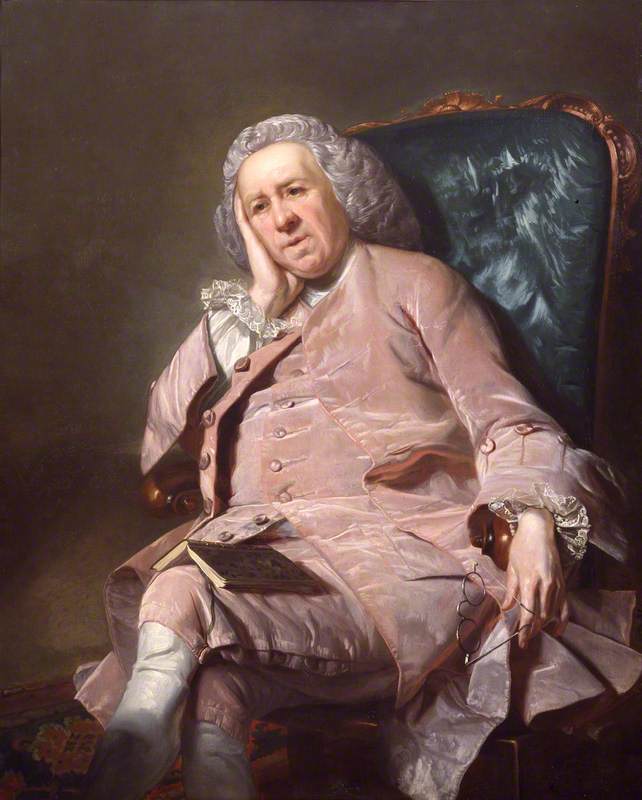
The predominance of pink in the portrait might well be a nod to her teacher, Ramsay, who was known for his use of the colour.
Black was clearly unfazed by awkward sitters. She built a flourishing artistic practice, painting and teaching the aristocracy, earning enough to live independently (she never married) and keep servants and a horse and carriage at her London home. She died there in old age just as the nineteenth century began.
Alicia Foster, curator
'Now you see us: women artists in Britain 1520–1920' is at Tate Britain, London, from 16th May to 13th October 2024
This content was funded by the Samuel H. Kress Foundation

